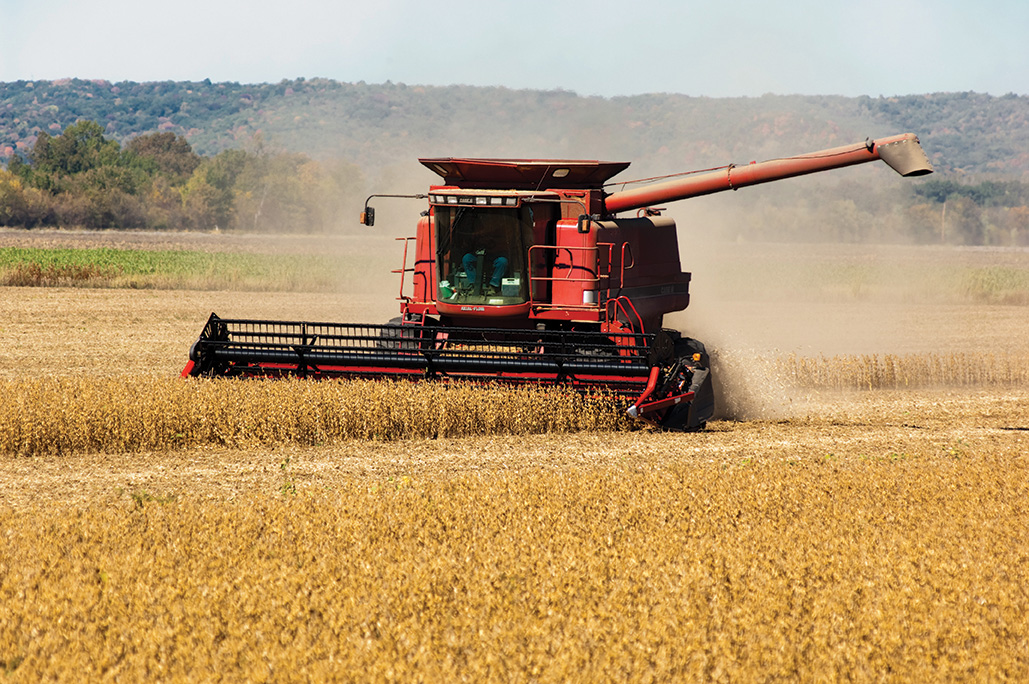
Setting a Grain Marketing Game Plan
February 26, 2024
Written By Adam Buckallew
Ben Brown meets many farmers in his role as an agricultural economist for the University of Missouri and MU Extension. During these interactions, he has discovered an unfortunate reality: Many farmers lack an exit plan for selling their grain.
“I always encourage people to create a plan,” Brown said. “Farmers need to think intentionally about what they will do with their crops and the risks they will face regardless of their chosen plan. Every option has tradeoffs.”
Brown said too many farmers are reluctant to consider pre-harvest grain marketing, which limits their profit potential.
“I’m a big believer in early-season marketing,” he said. “Taking advantage of pre-harvest marketing allows you to be more strategic with your sales. If you miss out on that window, you’re stuck with whatever the market is willing to give you.”
Seasonal marketing opportunities routinely arise in the spring and early summer. In most years, corn and soybean futures prices rally in spring and peak by late May or early June. These rallies occur when uncertainty about the next crop is most significant.
Typically, by mid-July, the highest seasonal prices for both crops have occurred, and futures prices tend to sell off. From 2000 to 2019, corn futures were higher on May 15 than on Oct. 15 in 14 out of 19 years, or 74% of the time. In those years, prices fell an average of $0.73 per bushel from spring to fall. In the five years when prices were higher in the fall, prices rose an average of $0.83 per bushel.
A farmer who took the May 15 price versus the Oct. 15 price in those years would have netted an additional $0.32 per bushel. The same seasonal trends apply to soybeans. From 2000 to 2019, the price on May 15 was higher than on Oct. 15 in 13 of 19 years (68%) by an average of $1.91 per bushel. In those 19 years, following a plan of taking the May 15 price would have netted a positive return of $0.96 per bushel.
Brown recommends creating a simple, straightforward grain marketing plan with decision dates and price targets to help farmers make selling decisions. He uses a benchmark (cost of production plus about 4% management expense) to determine when prices are too low to sell.
“I recommend picking dates that are easy to remember,” he said. “When you hit those dates, and there’s an opportunity to lock in some profit on a percentage of your expected harvest, go ahead and do it. This will help you prevent putting excessive risk on unpriced grain later in the season.”
Gaining a better understanding of basis is another way farmers can improve their grain marketing. Futures prices and basis follow different seasonal patterns, so the ability to manage futures price risk and basis risk independently creates an opportunity to improve returns.
“Basis is probably one of the most important components of grain marketing, but it is also the one thing that farmers know the least about because they tend to focus on cash prices,” Brown said.
Past basis data can help farmers anticipate future forecasts in their local market. Brown advises farmers to analyze basis using a three-year average for corn and a two-year average for soybeans.
“Basis gives us great insight into the supply and demand picture in an area and is a signal we can use to determine the right marketing tool,” Brown said. “That tool may be a hedge-to-arrive contract, a basis-only contract or a futures-only contract.”
Brown said there’s a huge emotional component to grain marketing that can’t be ignored. Farmers must weigh their personal risk tolerance when deciding grain marketing timing and do what works best for their farming operation.
“Ultimately, it comes down to what will make you lose the most sleep,” he said. “Would you rather sell, and the market goes up afterward, or would you rather wait to sell but have the market go down?”

